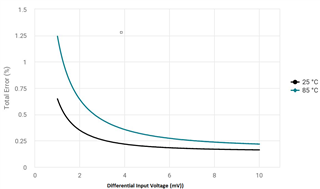Hi Team,
Our customer is considering the INAx290 in his application and has the following inquiries.
My requirement is to measure low differential voltage (2-20mV) with 54V common mode voltage
Can you let me know the gain variants of the IC which is more suitable for me
I can see A1 - A5 variants are available. what does gain 20V/V to 500V/V really mean?
I wanted to know if we need any discrete component for this INA series? I can see we don't need any discrete components in data sheet, so its direct connection to current sense and other end to DAQ.
Also In table 8-1, page 20 of data sheet specifies the Vsense for A5 as 10mV, does it mean the min it can sense 10mV or much lower it can sense. Also wanted to the resolution (min step size) in mV (min it can measure and the step).
Regards,
Danilo


